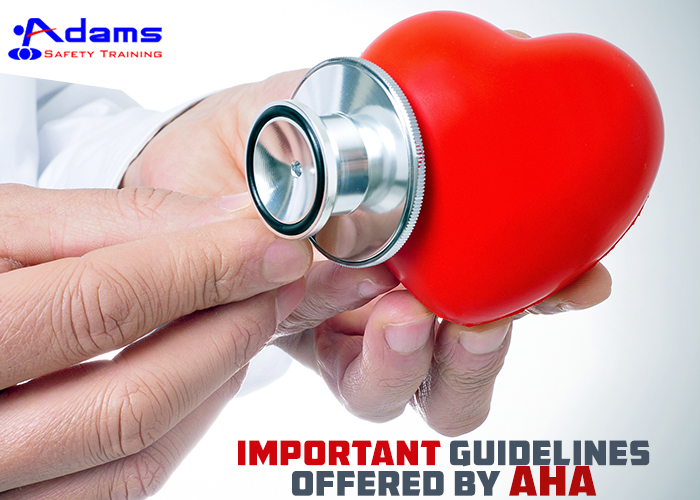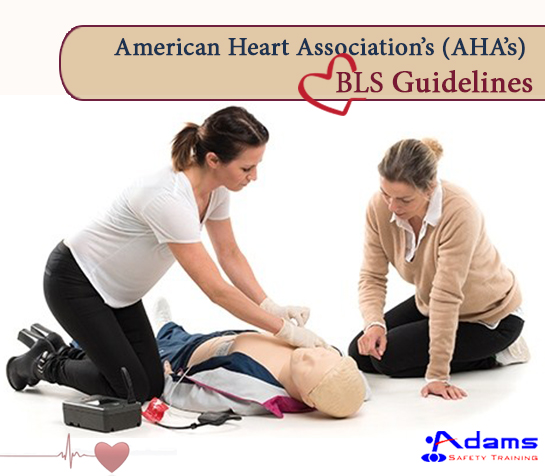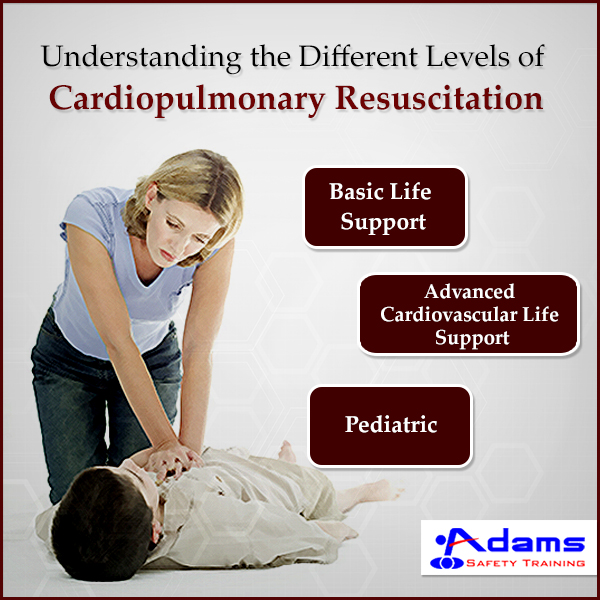
Category Archives: American Heart Association CPR
Steps involved while you plan to avail AHA training
1. Search for a trained instructor-
Search for an AHA-affiliated training center near your residence that can provide skilled instructors. The training center must be reputed enough and must have the best trainers. To choose a training center, you can always take help from your colleagues who have completed AHA approved training.
2. Confirm the testing and skills practices-
Once you find a reputed center near you, make sure that they provide a separate practice session for the e-learning courses. If they do not provide that, you can ask for the information regarding the class schedule and take the classes directly.
3. Visit the e-learning portal-
If the skill sessions are not provided by your local training center, you can always visit the online portal and select the course suitable for your skillset from the course catalog.
4. Take-up the AHA training course-
The cognitive part of the course can be taken online, and the local AHA training center can schedule a skill session post the e-learning class.
If you are searching for a good training center near you, visit AHA Training San Ramon today and get the best AHA-affiliated training.
Basics on AHA-affiliated training
The American Hospital Association (AHA-CC) administers and designs certifications and training to demonstrate that the healthcare personnel has achieved the standards fit for their job role. AHA training is quite vital for frontline workers and medical professionals to address emergencies and provide initial relief.
Training centers like AHA Training San Ramon can provide you the best courses and training materials required for completing AHA training.
Who can take the training?
Healthcare professionals like-
1. Nurses
2. Para-medical staffs
3. Physicians
4. Emergency medical equipment operators and technicians
5. Staffs assisting physicians
6. Nursing or medical students
7. Allied healthcare professionals
8. Police officers
Important Guidelines Offered by AHA
AHA or American Heart Association is a non-profit organization in the United States, engaged in promoting proper cardiac care with intent to reduce disability and deaths caused by cardiovascular disease and stroke. AHA is a leading COR education and training organization that help people to understand the significance of healthy lifestyle choice. Some of the dietary and other lifestyle related guidelines offered by Aha include:

For healthy eating pattern: For healthy eating pattern, AHA suggests that you must consume a variety of fruits, vegetables and grain products (including whole grains). Further, make sure to include fat-free and low fat dairy products in your diet including fish, poultry, legumes and lean meats.
For a healthy body weight: For a healthy body weight, AHA suggests that you must limit your consumption of foods containing high caloric density and low nutritional quality. Also avoid foods with a high content of sugars. Further, maintain a level of physical activity to achieve fitness.
For a perfect blood cholesterol and lipoprotein profile: To get a desirable blood cholesterol and lipoprotein profile, you must restrict the intake of foods with a high content of saturated fatty acids and cholesterol. Instead, you can eat grains and unsaturated fatty acids from vegetables, fish, legumes, and nuts.
American Heart Association’s (AHA’s) BLS Guidelines
The American Heart Association (AHA) is the US’s oldest and largest non-profit voluntary organization which is dedicated to save the lives of Americans by making them aware of the hazards of heart diseases and strokes. The Basic Life Support (BLS) is one of the most important guidelines provided by AHA, which can help your loved ones in case of any emergency.
Founded in 1924 by the group of six cardiologists, this institution has now over 22.5 million volunteers and supporters. AHA is all set on its mission to reduce disability and death from heart diseases and stroke. And, to get it done, they follow the law of sharing knowledge: the institution believes in sharing and delivering reliable information about heart disease and stroke along with the BLS guidelines.
With their primary goal to serve the public, AHA has managed to save many lives and have given the hope to the public to fight heart diseases and win against these diseases. AHA is the nation’s leader in CPR education & training and help people to understand the importance of healthy lifestyle choice.

The organization funds innovative research, fights for stronger public health policies, and provide critical tools and information to save and improve lives. Their work helps to create new knowledge about cardiovascular diseases and provide the most authoritative information which helps AHA to make it recommendations to the public.
Cardiac Arrest in Women: Signs, Symptoms and Prevention
Heart attacks are believed to be associated with only older men but this disease strikes nearly one million people in America every year. Young men and women are equally vulnerable to getting cardiac arrests. Women should be aware of the factors that accelerate the risks of having a cardiac arrest. The health care provider can guide you about the ways to minimize the risks.
Warning signs
• Feeling chest discomfort in squeezing the chest in fullness
• Discomfort in other areas such as back, neck, and the stomach with shortness of breath
• Chest discomfort with nausea and light-headedness
Risk factors
Factors such as high blood pressure, diabetes, smoking, high cholesterol and physical inactivity aggrandize the chances of suffering a cardiac arrest. According to the American Heart Association–sponsored telephone survey very few women were aware of the risk factors and symptoms of heart attack.
Aspirin is widely popular as a preventive medicine for deterring the clotting of blood vessels. It does decrease the chances of having a stroke or heart attack but can increase the risks such as stomach bleeding. Aspirin can be taken in low doses.
All women should consult the healthcare providers, who are required to assess your chances as per the risk prediction charts and inform you about preventive strategies.
It is better to be prepared in case of urgencies. Therefore, all women must take part in the licensed CPR classes to provide first aid to the victims.
Understanding the Different Levels of Cardiopulmonary Resuscitation
Life threatening situations can arise at any time mostly when one would least expect them to happen. Cardiopulmonary resuscitation (CPR) is the technique that comes handy in many of those situations to save the life of the person whose life is in danger. However not all can perform this technique without having the right knowledge about it.
To be able to successfully aid a person using this technique, one has to be well-versed with the process in which it works. American Heart Association is one of those few institutes which often press for educating people about such procedures in order to keep heartbeat of patients running until they can be provided with proper medical attention.
Training for AHA CPR process can be obtained in three levels, namely:
- Basic Life Support: This procedure is meant to train healthcare professionals as well as volunteers in order to make them understand the criticality of providing early CPR. This can aid them in relieving people from choking, no pulse, breathing problem and more.
- Advanced Cardiovascular Life Support: Often meant for healthcare professionals, this process involves methodologies to treat adult patients experiencing cardiopulmonary emergencies.
- Pediatric: This training is imparted to healthcare professionals for treating adolescents, children and infants who are in need to emergency cardiovascular attention. This process also involves assessment of associated risk before the actual treatment can be provided.
AHA updated guidelines for pediatric life support – Infographic
The given Infographic summarizes the updated guidelines for pediatric life support issued by AHA. Earlier in Oct’2015 AHA released the updated CPR guidelines.
New information or updates are provided about fluid resuscitation in febrile illness, atropine use before tracheal intubation, use of Amiodarone and Lidocaine in shock-refractory VF/pVT, TTM after resuscitation from cardiac arrest in infants and children, and post–cardiac arrest management of blood pressure.
Atropine for Endotracheal Intubation: There is no evidence to support the routine use of atropine as a premedication to prevent bradycardia in emergency pediatric intubations. It may be considered in situations where there is an increased risk of bradycardia. There is no evidence to support a minimum dose of atropine when used as a premedication for emergency intubation.
Invasive Hemodynamic Monitoring during CPR: If invasive hemodynamic monitoring is in place at the time of a cardiac arrest in a child, it may be reasonable to use it to guide CPR quality.
Targeted Temperature Management: For children who are comatose in the first several days after cardiac arrest (in-hospital or out-of-hospital), temperature should be monitored continuously and fever should be treated aggressively. For comatose children resuscitated from OHCA, it is reasonable for caretakers to maintain either 5 days of normothermia (36°C to 37.5°C) or 2 days of initial continuous hypothermia (32°C to 34°C) followed by 3 days of normothermia. For children remaining comatose after IHCA, there are insufficient data to recommend hypothermia over normothermia.
Post–Cardiac Arrest Fluids and Inotropes: After ROSC, fluids and inotropes/vasopressors should be used to maintain a systolic blood pressure above the fifth percentile for age. Intra-arterial pressure monitoring should be used to continuously monitor blood pressure and identify and treat hypotension.
For more guidelines go through the Infographic below:

AHA CPR Guidelines Update 2015: Top 5 Changes – Video
Cardiopulmonary resuscitation (CPR) is a lifesaving technique that can help a person who has stopped breathing. Approximately 92 percent of cardiac arrest victims die in out-of-hospital conditions because of not receiving immediate CPR, but if more bystanders know how to perform CPR, more lives could be saved. The American Heart Association’s 2015 Guidelines Update for CPR also places much emphasis on high-quality CPR training for rescuers, BLS providers, and bystanders. The following video showcases top five changes in CPR procedure as issued by AHA in its 2015 CPR Guidelines Updates.
Updated CPR guidelines refine how deep and how fast chest compressions should be given to a cardiac arrest patient during an emergency situation. For adults, a rescuer should provide chest compressions at a rate of 100-120 compressions per minute and push down at least 2 inches, but not more than 2.4 inches. The new CPR guidelines also recommend allowing full chest wall recoil after each compression to avoid any damage to the sternum. See the video below to know more about the latest updates in CPR guidelines.
2015 AHA Guidelines Update for CPR – Infographic
Cardiopulmonary resuscitation (CPR) is a lifesaving procedure that helps in improving the chances of survival of cardiac arrest victims. The earlier the CPR is given to the patient, the greater are the chances of successful resuscitation. After every 5 years, the American Heart Association (AHA) releases a new set of CPR guidelines to help BLS providers in performing correct CPR procedure. This year the AHA has released the new CPR guidelines in October 2015. The Infographic presents the current recommendations for chest compressions, compression-ventilation ratio, compression rate & depth, and hand placement.
The basic steps for preparation of CPR according to the 2015 CPR guidelines remain virtually identical to the 2010 version. A bystander or BLS provider should check for responsiveness, activate emergency response system, and then begin CPR by giving chest compressions at 100-120 compressions per minute and 1 breath every 6 seconds. See the below infographic to know about the do’s and don’ts of high quality CPR.




